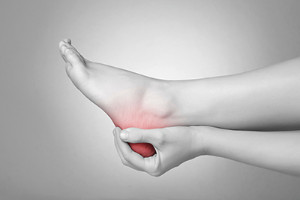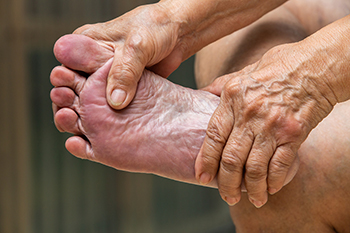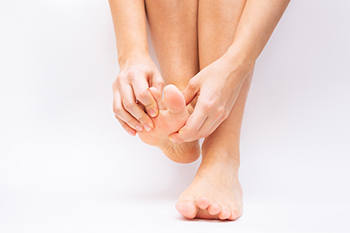
There are certain risk factors associated with developing heel pain caused by plantar fasciitis (damage/inflammation of the plantar fascia tissue on the sole of the foot). Any repeated stress or strain on this connective tissue—being overweight, running excessively, standing while working, having high arches or flat feet, over-pronating when you walk, etc.—can lead to the development of this condition. You can often distinguish plantar fasciitis pain from other types of heel pain because it is worse when you take your first steps in the morning. The pain may subside after you move around for a while but usually comes back later in the day. A podiatrist is highly skilled and experienced at spotting and treating plantar fasciitis, as it is the most common form of heel pain. They have various effective methods of repairing the plantar fascia, reducing inflammation, and eliminating pain. Make an appointment with your local podiatrist if you are experiencing heel pain to have your condition diagnosed and treated properly.
Plantar fasciitis is a common foot condition that is often caused by a strain injury. If you are experiencing heel pain or symptoms of plantar fasciitis, contact Cary Golub, DPM from New York. Our doctor can provide the care you need to keep you pain-free and on your feet.
What Is Plantar Fasciitis?
Plantar fasciitis is one of the most common causes of heel pain. The plantar fascia is a ligament that connects your heel to the front of your foot. When this ligament becomes inflamed, plantar fasciitis is the result. If you have plantar fasciitis you will have a stabbing pain that usually occurs with your first steps in the morning. As the day progresses and you walk around more, this pain will start to disappear, but it will return after long periods of standing or sitting.
What Causes Plantar Fasciitis?
- Excessive running
- Having high arches in your feet
- Other foot issues such as flat feet
- Pregnancy (due to the sudden weight gain)
- Being on your feet very often
There are some risk factors that may make you more likely to develop plantar fasciitis compared to others. The condition most commonly affects adults between the ages of 40 and 60. It also tends to affect people who are obese because the extra pounds result in extra stress being placed on the plantar fascia.
Prevention
- Take good care of your feet – Wear shoes that have good arch support and heel cushioning.
- Maintain a healthy weight
- If you are a runner, alternate running with other sports that won’t cause heel pain
There are a variety of treatment options available for plantar fasciitis along with the pain that accompanies it. Additionally, physical therapy is a very important component in the treatment process. It is important that you meet with your podiatrist to determine which treatment option is best for you.
If you have any questions, please feel free to contact our offices located in Williston Park, and Long Beach, NY . We offer the newest diagnostic and treatment technologies for all your foot care needs.





